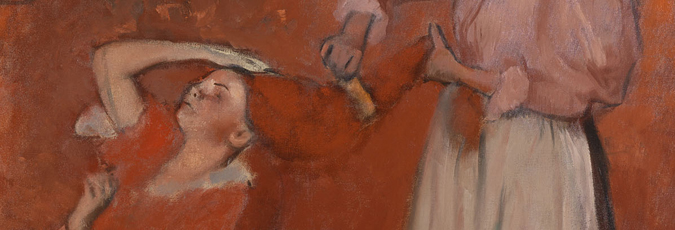Degas and Manet
Manet painted The Execution of Maximilian in response to an acute political crisis. The Austrian Archduke Maximilian had been imposed by Napoleon III as puppet emperor of Mexico, and was executed in 1867 when French troops withdrew. It was a huge scandal in France, and Manet – never one to shy away from controversy – immediately painted the subject.
He completed four versions of the composition. This one remained in his studio at his death in 1883. Having suffered damage, it was cut into pieces by his son and sold separately. Over the successive years, Manet’s great friend Degas went to great effort to retrieve the various fragments and found four, reassembling them onto a single canvas.
Degas’s determination was driven by both personal and artistic motivations. As a collector, he sought out works by the 19th-century masters he most admired, Ingres and Delacroix, and often supported less affluent members of the Impressionist group by buying their works. But he acquired works by Manet, who was from a similar affluent bourgeois background to his own, out of both friendship and admiration. He thought this controversial painting had special importance, and kept it until his death in 1917.
The following year, it was bought by the National Gallery at one of the posthumous sales of Degas’s collection, where the hundreds of paintings and drawings that he had amassed during his life were sold. At the time, the National Gallery was just starting to acquire modern French paintings, and this became one of the first works of modern art to enter the Gallery’s collection.

